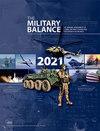Chapter One: The future of maritime competition
Q3 Social Sciences
引用次数: 1
Abstract
No contest at sea After the end of the Cold War, the maritime domain seemed an almost benign conduit for the projection of (essentially Western) power. Operational focus shifted from traditional blue-water operations to encompass the ability not only to project power from the sea but also to operate in the littoral zone, which was becoming the main contested maritime space. The military and diplomatic power of the carrier strike group seemed clear: six US aircraft-carrier groups took part in Operation Desert Storm against Iraq in 1991; and in 1996, Washington ostentatiously deployed two carriers to the waters off Taiwan in response to pressure from Beijing on Taipei. Though this may have had a deterrent effect at the time, it is now widely viewed as having spurred Beijing’s subsequent push to develop an area-denial capability. Now that they were not facing any major statebased threat, European navies switched investment from sea-control missions to power-projection and presence missions. While many retained a core of high-end platforms, such as the Franco-Italian Horizon and British Type-45 air-defence destroyers, fleet inventories dwindled and procurement shifted more towards amphibious and general maritime-security capabilities. Examples include the French Mistralclass amphibious assault ships and latterly the large German F125 Baden-Württemberg-class frigates aimed particularly at littoral and peace-support missions. At the same time, the US Navy developed the Littoral Combat Ship (LCS). Although the programme became mired in controversy over both capabilities and cost, the LCS was intended to be a relatively simple and inexpensive small combatant that would operate in the littoral zone but also potentially carry out maritime-security and presence missions. In some cases, a cooperative approach developed to tackle the challenge of countering mainly nonstate-based threats to maritime security. This was perhaps most evident in the various multinational groupings that coalesced around the threat of piracy New dynamics of maritime competition are emerging. The contemporary maritime domain continues to become more congested, contested and complex, while the centre of gravity of maritime power appears to be shifting further away from Western states. This will change the way operations are conducted at sea and the types of naval capabilities that states seek to procure. Rapid technological change and the proliferation of advanced weaponry are only accelerating this transformation.第一章:海上竞争的未来
本文章由计算机程序翻译,如有差异,请以英文原文为准。
求助全文
约1分钟内获得全文
求助全文
来源期刊

The Military Balance
Social Sciences-Political Science and International Relations
CiteScore
1.00
自引率
0.00%
发文量
18
 求助内容:
求助内容: 应助结果提醒方式:
应助结果提醒方式:


